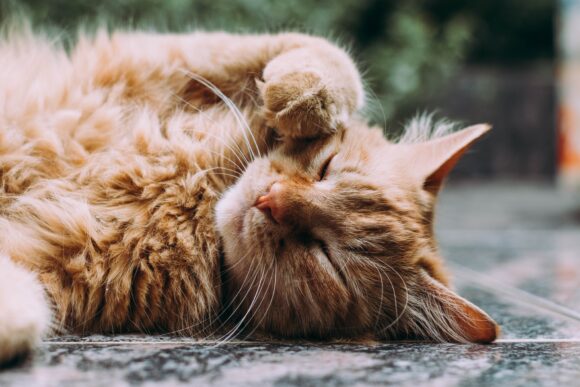The Importance of Providing Proper Scratching Outlets
In order to ensure the well-being of your furry feline companion, it is crucial to understand the importance of providing them with proper scratching outlets. Cats have an innate need to scratch, and by offering them appropriate surfaces to indulge in this behavior, you not only protect your furniture and belongings but also promote their physical and mental health. Whether it’s a scratching post, a sisal rope, or a cardboard scratching pad, these outlets offer more than just a place for your cat to sharpen their claws – they provide a sense of security, exercise, and territory marking. By recognizing the significance of these outlets, you can create a harmonious environment for both you and your beloved cat.

The Importance of Providing Proper Scratching Outlets
Owning a cat comes with various responsibilities, and one of the most important ones is providing them with proper scratching outlets. Scratching is a natural behavior for cats and serves several crucial purposes. By understanding why cats need to scratch, the benefits of providing scratching outlets, and the consequences of not doing so, you can ensure the well-being and happiness of your feline companion.
Why Cats Need to Scratch
Scratching is an innate behavior for cats, rooted in their primal instincts. Although it may seem destructive to us, it serves several important purposes for cats. Firstly, scratching helps cats maintain the health of their claws by removing the dead outer layers. It also allows them to stretch their muscles and flex their paws, promoting healthy blood circulation. Additionally, scratching helps cats mark their territory by leaving behind visual and scent cues, which communicate to other cats that the area has already been claimed.
The Benefits of Providing Scratching Outlets
Providing proper scratching outlets offers numerous benefits for both you and your furry friend. Firstly, it helps protect your furniture and other household items from the destructive nature of scratching. By providing designated scratching areas, you redirect your cat’s natural behavior away from your expensive couch or drapes. This can significantly reduce the frustration and expense of repairing or replacing damaged furniture.
Furthermore, scratching outlets offer a form of mental and physical stimulation for your cat. Engaging in regular scratching activities allows them to relieve stress, burn off excess energy, and exercise their muscles. This can help prevent behavioral issues such as aggression or excessive meowing, as cats who are not provided with appropriate outlets may resort to destructive or attention-seeking behaviors.
The Consequences of Lack of Scratching Outlets
Failing to provide your cat with proper scratching outlets can have detrimental consequences for both your cat’s well-being and your household. Without suitable scratching options, your cat may resort to scratching furniture, walls, or other surfaces in your home. This can lead to irreversible damage, leaving you with costly repairs or replacements. Additionally, the lack of scratching outlets can result in your cat feeling frustrated and stressed, leading to behavioral issues like aggression or inappropriate elimination.
Different Types of Scratching Outlets
When it comes to choosing the right scratching outlets for your cat, the options are plentiful. Understanding the various types can help you select the most suitable options for your feline friend.
Traditional Scratching Posts
Traditional scratching posts, typically made of wood or carpet, are a classic choice for cats. They provide a sturdy vertical surface for cats to dig their claws into and stretch their bodies. The texture of the material used can vary, allowing you to find the one that best suits your cat’s preferences.
Cardboard Scratchers
Cardboard scratchers have gained popularity due to their affordability and effectiveness. They consist of corrugated cardboard, which cats can sink their claws into easily. Cardboard scratchers often come in various shapes and sizes, including flat mats and inclined surfaces, allowing cats to choose their preferred scratching position.
Sisal Rope Scratchers
Sisal rope scratchers provide a natural and durable scratching surface for cats. These scratchers are made by wrapping sisal rope tightly around a structure, typically a post or a base. The rough texture of sisal rope appeals to many cats and encourages them to scratch.
Scratching Pads
Scratching pads are another versatile option, usually made of a combination of cardboard and sisal material. They provide a flat surface for both horizontal and vertical scratching. The compact size of scratching pads makes them suitable for smaller spaces or for cats who prefer scratching closer to the ground.
Cat Trees and Towers
For those looking to provide their cats with a more comprehensive play and scratching area, cat trees and towers are an excellent choice. These multi-level structures often include scratching posts, perches, hideaways, and interactive toys. They offer a diverse range of activities for your cat and can accommodate multiple cats in a household.
Choosing the Right Scratching Outlet
When selecting scratching outlets, it’s essential to consider your cat’s preferences, the size and stability of the outlet, as well as its placement in your home. Additionally, multi-cat households may require multiple scratching options to avoid territorial disputes.
Consider Your Cat’s Preferences
Just like humans, cats have individual preferences. Some cats may enjoy the rough texture of sisal rope, while others may prefer the softness of carpet or the cardboard material. Observe your cat’s behavior and experiment with different textures to determine their preferences.
Size and Stability
Ensure that the scratching outlet is appropriate for your cat’s size, allowing them to stretch fully and scratch comfortably. Stability is also crucial to prevent any accidents or injuries. Opt for a sturdy scratching outlet that won’t wobble or topple over when your cat applies pressure.
Placement in the Home
Strategically place scratching outlets in areas where your cat spends the most time or shows the most interest. Cats often scratch after waking up, so consider placing outlets near their sleeping spots. Placing scratching posts or pads near furniture or carpets that your cat previously targeted can also redirect their scratching behavior.
Multiple Outlets for Multi-Cat Households
In homes with multiple cats, it’s crucial to provide each cat with their scratching outlet to prevent conflicts over territory. Have separate scratching posts or trees at different locations to ensure that each cat has their designated area for scratching.
Training Your Cat to Use Scratching Outlets
Introducing your cat to their scratching outlets and training them to use them can be a gradual process. Patience and positive reinforcement are key to successfully redirecting their scratching behavior.
Introduce the Scratching Outlet Gradually
Place the scratching outlet near your cat’s existing scratching locations or furniture they frequently target. Encourage your cat to explore the new outlet by placing treats or toys around it. Initially, your cat may exhibit some hesitation, but as they become familiar with the new outlet, they will feel more inclined to use it.
Use Positive Reinforcement
Rewarding your cat for using the scratching outlet can reinforce the desired behavior. Whenever you notice your cat scratching their designated area, offer praise, treats, or playtime to associate positive experiences with using the outlet. This positive reinforcement will encourage your cat to continue using the scratching outlet instead of inappropriate surfaces.
Redirect Undesirable Scratching Behavior
If you catch your cat scratching furniture or other off-limit areas, avoid punishing them. Instead, gently redirect their attention to the scratching outlet by using a firm but calm voice and guiding them towards the appropriate location. Remember to reward them when they comply and use the outlet.
Discourage Declawing as an Alternative
Declawing, the surgical removal of a cat’s claws, is an inhumane practice that should be avoided. It not only causes great pain to cats but also has long-lasting physical and psychological consequences. By providing proper scratching outlets, you can prevent the need for declawing and ensure the overall well-being of your cat.

Maintaining and Replacing Scratching Outlets
To ensure that your cat continues to use their scratching outlets and derive the maximum benefit from them, proper maintenance and timely replacement are essential.
Regular Cleaning
Over time, scratching outlets can accumulate dirt, debris, and cat hair. Regularly clean the outlets by vacuuming or brushing them to remove any buildup. This will ensure that the scratching surface remains attractive to your cat and minimize the risk of any skin or paw irritation.
Providing Appropriate Surfaces and Textures
Inspect your cat’s scratching outlet regularly to ensure that the surface is still in good condition. Cats prefer to scratch on materials that allow them to sink their claws in easily. If you notice any signs of wear or smoothness, provide a replacement or cover the surface with an attractive scratching material, such as sisal rope or replaceable cardboard.
Replacing Worn-Out or Damaged Outlets
As cats continue to use their scratching outlets, they may become worn out or damaged over time. It is crucial to replace them promptly when they reach this stage to prevent your cat from seeking alternative scratching areas. Providing fresh, stimulating outlets will ensure that your cat remains engaged and satisfied with their scratching experience.
DIY Scratching Outlets: Fun and Budget-friendly Options
For those who enjoy getting creative and saving money, DIY scratching outlets can be a great option. Here are a few ideas for making homemade scratching outlets:
Creating a Homemade Scratching Post
You can make a simple but effective scratching post by wrapping sisal rope tightly around a sturdy vertical pole, such as a wooden base or a PVC pipe. Secure the rope with nails or glue, ensuring that it is taut and will withstand your cat’s scratching.
Repurposing Household Items as Scratchers
Many household items can be repurposed into scratching outlets, providing cost-effective alternatives. For example, an old carpet square or a wooden plank covered with carpet remnants can serve as a scratcher. Be sure to trim any loose threads or nails to ensure your cat’s safety.
Making a DIY Cardboard Scratcher
Cardboard scratchers are not only affordable but also easy to make at home. Cut a large piece of cardboard into the desired shape, such as a square or a curve. Score the surface vertically to create ridges, making it more appealing for your cat to scratch on.

Addressing Common Concerns and Misconceptions
There are some common concerns and misconceptions regarding scratching outlets that need to be addressed.
Scratching Damage to Furniture
Many cat owners worry that providing scratching outlets will not prevent their cats from scratching furniture. However, by offering suitable alternatives and training your cat to use them, you can significantly reduce the likelihood of furniture damage. Consistency and positive reinforcement are key to successfully redirecting your cat’s scratching behavior.
Trimming Cat’s Nails vs. Scratching Outlets
While regular nail trimming is an important part of cat grooming, it should not replace the need for scratching outlets. Cats naturally have a strong instinct to scratch, and providing outlets allows them to maintain their claws and engage in other vital behaviors, such as stretching and marking territory.
Training Older Cats to Use Scratching Outlets
It is never too late to introduce scratching outlets to older cats. Although they may be set in their ways, you can still encourage them to use scratching posts or pads. Follow the same gradual introduction and positive reinforcement techniques mentioned earlier, and be patient with the process.
Scratching Outlets for Special Needs Cats
Special needs cats, such as senior cats, disabled cats, or cats recovering from injuries, may require special considerations when it comes to scratching outlets.
Adapting Outlets for Senior Cats
Senior cats may have limitations in mobility or physical strength. Provide scratching outlets that are easily accessible and have a lower height, allowing them to comfortably reach and use them. Placing outlets near their favorite resting spots can also encourage them to engage in scratching activities.
Scratching Outlets for Disabled or Injured Cats
If your cat has a disability or is recovering from an injury that affects their ability to scratch, consult with your veterinarian for appropriate alternatives. They may recommend specialized scratching surfaces or adaptive solutions tailored to your cat’s unique needs.
Managing Excessive Scratching Behavior in Stressed Cats
Stress can sometimes trigger excessive scratching behavior in cats. If your cat is displaying an increase in scratching activities, try to identify and address the underlying cause of their stress. Providing additional environmental enrichment, such as interactive toys or calming pheromone diffusers, can help alleviate their anxiety and reduce excessive scratching.
Conclusion
Providing proper scratching outlets for your cat is essential for their physical and mental well-being. Understanding why cats need to scratch, the benefits of providing scratching outlets, and the consequences of not doing so can help you make an informed decision. By choosing the right outlets, training your cat to use them, and maintaining and replacing them when necessary, you can improve the overall happiness and contentment of your feline companions. Remember, a well-satisfied cat means a harmonious and stress-free environment for both you and your furry friend.


